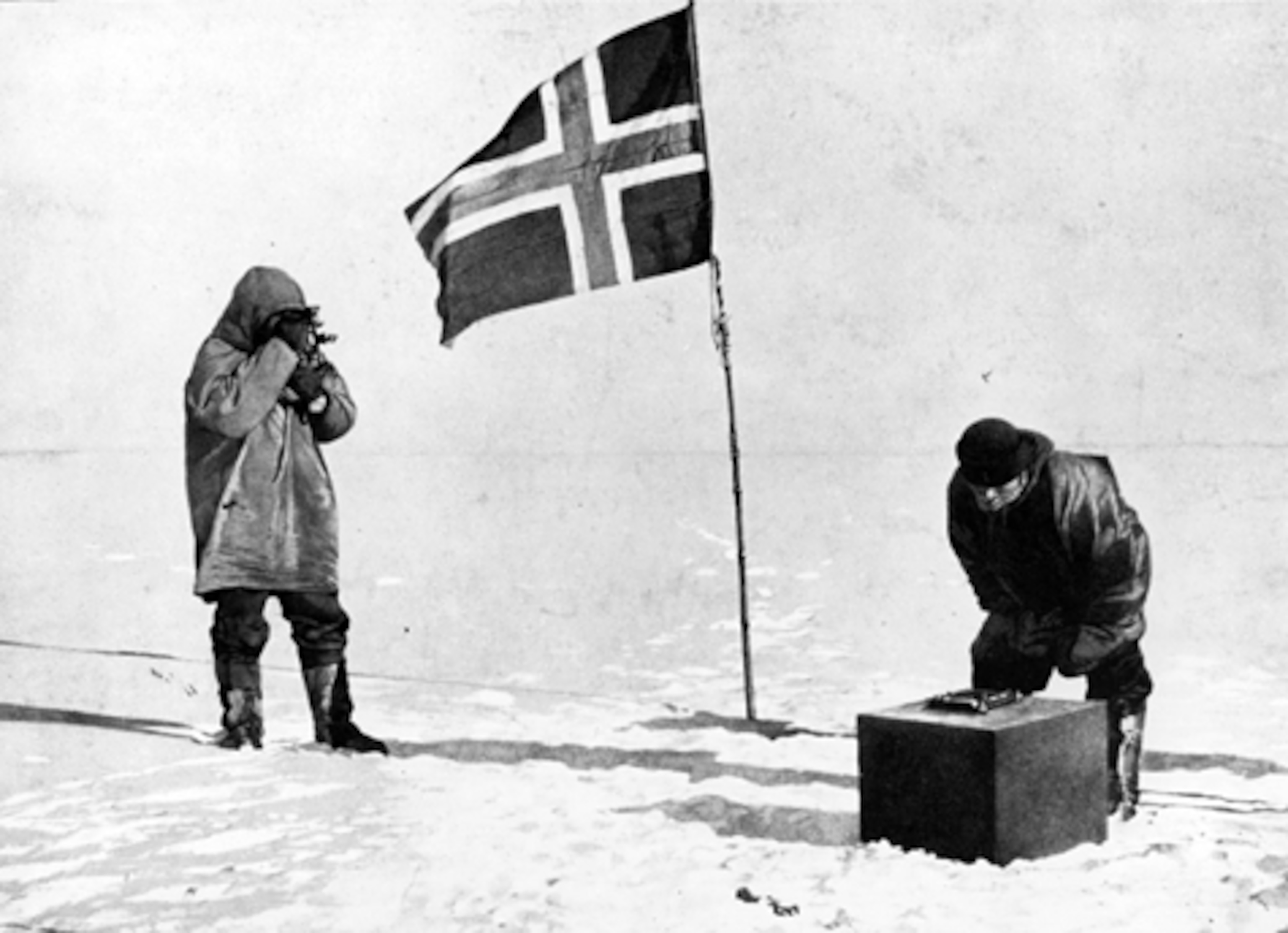
100th Anniversary of Roald Amundsen Reaching South Pole—How the Grueling Race Was Won
It was the strangest of all races. Two teams of five men each—one British, the other Norwegian—set out at the beginning of the 1911 Antarctic summer, both bent on becoming the first explorers to reach the South Pole. The British team was led by 43-year-old Robert Falcon Scott, the Norwegian by 39-year-old Roald Amundsen. Each man had already made bold expeditions to the Antarctic region.
Yet because the two expeditions had chosen to build their coastal base camps 600 miles apart, at either edge of the vast Ross Ice Shelf, their paths would never overlap, and the two teams would never catch sight of each other. There was no way to know who was leading the race.
After wintering over in Framheim, Amundsen’s team set out on October 18. Scott’s party did not depart from Cape Evans until November 1. The two parties had about the same distance—roughly 800 miles in a straight line—to cover to get to 90 degrees south. Yet their traveling styles were utterly different, and those differences would spell victory and defeat. Amundsen used dogs to haul his sledges, while the men skied; to supplement the rations they carried, they would kill and eat the dogs when they succumbed to exhaustion. Scott experimented in vain with ponies and motorized tractors, but ended up heading for the Pole with his men in harnesses, pulling their heavy sledges themselves. At the last minute, unwilling to exclude the plucky “Birdie” Bowers from the party as it neared its goal, Scott ended up launching his final push with four pairs of skis for five men. Bowers had to plod along in his boots, plunging deep into the snow at every step.
After nearly two months of smooth progress, Amundsen’s team pitched their tent at 89˚45’ S., a mere 15 miles from the Pole. The men were almost too excited to sleep. They also wrestled with the same disturbing question:
What if they discovered that Scott’s team had made it there first. At 3 p.m., on December 14, the dog-drivers simultaneously barked out the command “Halt!” As closely as their navigational instruments could determine, they stood exactly at 90 degrees south. There was no sign that anyone had ever been there before.
It was almost anti-climatic. Wrote Amundsen later, with his characteristic self-effacement, “The goal was reached, the journey ended. I cannot say—though I know it would sound much more effective—that the object of my life was attained. That would be romancing rather too barefacedly.”
The men spent three days at the Pole, sending out skiers in each direction to crisscross the plateau and plant markers, to prove to any future doubters that the Norwegians had indeed accomplished the feat that explorers had dreamed of for centuries.
They slaughtered Helge, “an uncommonly useful and good-natured dog” who had played out: “[W]ithin a couple of hours there was nothing left of him but his teeth and the tuft of his tail,” Amundsen wrote. On the last evening in the tent, the taciturn Olav Bjaaland surprised everyone by standing up and delivering “a really fine oration.” At the end of his speech, he pulled out a case of cigars he had secretly carried with him through the long sledge journey and offered one to each of his comrades. “A cigar at the Pole!” Amundsen recorded. “What do you say to that?”
The festive mood stretched through the three days. As the team departed on December 18, they left behind a tall brown tent with their country’s flag mounted atop the center pole. Inside they deposited a letter to King Haakon VII, with a note asking Scott to deliver it—not a thumbing of Norwegian noses at the British, but a documentation of their triumph in case Amundsen’s party disappeared on their return journey. “Scott will arrive during the next day or two,” the leader told one of his teammates. “If I know the British, they won’t give up once they’ve started.”
Less than a year later Amundsen gave his first American lecture on his historic expedition to the National Geographic Society. Today, he is acclaimed as the greatest polar explorer of all time.
- National Geographic Expeditions
Six years before reaching the South Pole, he had completed the first traverse of the Northwest Passage, a quest that had previously claimed hundreds of lives and stymied a half-century of British expeditions there. And in 1926, in a dirigible designed by the Italian engineer Umberto Nobile, Amundsen flew over the North Pole, as he and his South Pole teammate Oscar Wisting became the first men to reach both poles, whether on foot or by air. Tragically, Amundsen died two years later when his plane crashed on a rescue mission over the Barents Sea north of Norway. His body was never found.
More than a month after Amundsen reached it, Scott and his teammates, on January 17, 1912, stumbled to the Pole. The discovery of the Norwegian tent, the flag, and the letter to the king came as the cruelest possible blow at the end of an unimaginably cruel journey. “Great God! this is an awful place,” wrote Scott in his diary.
On their return journey to Cape Evans, all five men died of frostbite, starvation, and exhaustion. Trapped in a tent with his two surviving teammates, as a nine-day storm prevented them from reaching a life-saving depot of food and cooking gas only eleven miles away, Scott was the last to die. He kept making entries in his diary till the end, and on March 29, he penned his last words: “It seems a pity, but I do not think I can write more.” R. SCOTT.
At some point he added: “Last entry. For God’s sake, look after our people.”
